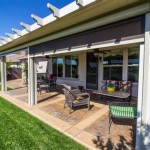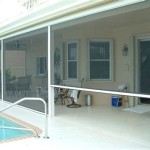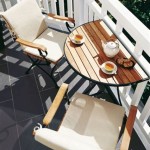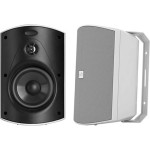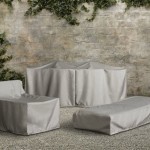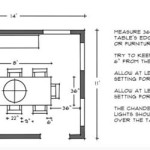Sliding Patio Doors with Built-In Blinds and Screens: An In-Depth Overview
Sliding patio doors represent a significant architectural and functional element in many contemporary homes. They offer a seamless transition between indoor and outdoor spaces, maximizing natural light and providing easy access to patios, decks, and gardens. Integrating built-in blinds and screens into these doors elevates their practicality and aesthetic appeal, offering enhanced convenience, privacy, and energy efficiency.
This article aims to provide a detailed examination of sliding patio doors with built-in blinds and screens, encompassing their construction, advantages, disadvantages, installation, maintenance, and factors to consider when selecting these systems. The objective is to furnish readers with the information necessary to make informed decisions regarding the incorporation of these doors into their residential or commercial projects.
Key Advantages of Integrated Blinds and Screens
The primary advantage of sliding patio doors with integrated blinds and screens lies in their consolidated functionality. These built-in systems eliminate the need for separate window treatments and screen doors, offering a streamlined and aesthetically cohesive look. This integration also provides several specific benefits:
Enhanced Privacy: The built-in blinds offer immediate and adjustable privacy, allowing homeowners to control the amount of light and visibility into their homes. Unlike traditional curtains or blinds, integrated systems are protected from dust and damage, ensuring consistent and reliable operation. The blinds can be easily adjusted to fully open, fully closed, or tilted at various angles to manage light and privacy levels throughout the day.
Improved Energy Efficiency: The blinds, when closed, act as an additional layer of insulation, reducing heat transfer during summer and heat loss during winter. This can significantly contribute to lower energy bills and improved indoor comfort. The screens also contribute to energy efficiency by allowing for natural ventilation without letting in insects, reducing the reliance on air conditioning.
Protection from the Elements: Integrated blinds and screens are shielded from the elements, including dust, dirt, and moisture. This protection prolongs their lifespan and reduces the need for frequent cleaning and maintenance. The screens prevent insects from entering the home, creating a more comfortable indoor environment, especially during warmer months.
Ease of Use and Maintenance: The integrated design simplifies operation. Blinds are typically controlled by a simple slider or tilt wand discreetly located on the door frame. The screens are often retractable or sliding, integrated seamlessly into the door structure. Unlike traditional window treatments, cleaning is minimal, usually requiring only occasional wiping with a damp cloth. This ease of maintenance makes them an attractive option for busy homeowners.
Increased Durability: The enclosed design of the blinds within the door panels protects them from damage caused by pets, children, or accidental contact. This ensures increased durability and a longer lifespan compared to externally mounted window treatments. The screens are also protected when retracted or slid away, preventing tearing or bending.
Construction and Materials
Sliding patio doors with built-in blinds and screens comprise several key components, each contributing to their overall performance and durability. Understanding the materials and construction techniques used in these doors is crucial for making informed purchasing decisions.
Door Frame Materials: The most common frame materials include vinyl, aluminum, fiberglass, and wood. Vinyl offers excellent insulation and is relatively low-maintenance. Aluminum is strong and durable, but it can be less energy-efficient than vinyl. Fiberglass provides a good balance of strength, insulation, and durability. Wood offers a classic aesthetic but requires regular maintenance to prevent rot and warping. The choice of frame material depends on factors such as budget, climate, and aesthetic preferences.
Glass Panes: The glass used in these doors is typically double-paned or triple-paned for enhanced insulation. Low-E (low-emissivity) coatings are often applied to the glass to further reduce heat transfer and block harmful UV rays. Some doors may also feature argon or krypton gas fills between the panes to improve thermal performance. Tempered glass is commonly used for safety, which shatters into small, relatively harmless pieces upon impact.
Blinds: The blinds are usually made of aluminum, vinyl, or fabric. Aluminum blinds are durable and easy to clean. Vinyl blinds are moisture-resistant and ideal for humid environments. Fabric blinds offer a softer look and can provide better light diffusion. The blinds are typically operated by a slider or tilt wand located on the door frame, allowing for precise control of light and privacy.
Screens: The screens are typically made of fiberglass or aluminum mesh. Fiberglass screens are flexible and resistant to tearing, while aluminum screens are stronger and more durable. Retractable screens are often used, which slide or roll into a housing when not needed, preserving the view and preventing damage. Sliding screens are also common, integrated into the door frame and sliding along a track.
Seals and Weatherstripping: Effective seals and weatherstripping are crucial for preventing air and water infiltration. High-quality weatherstripping is used around the perimeter of the door and between the sliding panels to create a tight seal. This helps to improve energy efficiency and prevent drafts and leaks.
Installation and Maintenance
Proper installation and regular maintenance are essential for ensuring the long-term performance and durability of sliding patio doors with built-in blinds and screens. Incorrect installation can lead to air and water leaks, operational issues, and reduced energy efficiency.
Installation: Ideally, a professional contractor should perform the installation. The process involves removing the existing door, preparing the opening, installing the new door frame, and securing the sliding panels. The installation also includes ensuring proper alignment and smooth operation of the doors, blinds, and screens. Sealing the perimeter of the door with caulk is crucial to prevent air and water leaks.
Maintenance: Regular maintenance is relatively simple. The door frame should be cleaned periodically with a mild soap and water solution. The glass panes can be cleaned with a glass cleaner. The blinds should be dusted regularly or wiped with a damp cloth. The screens can be cleaned with a soft brush or vacuumed to remove dust and debris. Lubricating the tracks and rollers of the sliding panels can ensure smooth operation. Inspecting the weatherstripping and seals regularly and replacing them as needed can prevent air and water leaks.
Repair: If the blinds or screens become damaged, they may be repairable. However, depending on the design and construction, repairs may require specialized tools and expertise. In some cases, it may be more cost-effective to replace the entire door panel. If the glass is broken, it should be replaced immediately to prevent injury and maintain energy efficiency. A qualified glass contractor can perform the replacement.
Factors to Consider When Selecting Sliding Patio Doors with Built-In Blinds and Screens
Selecting the right sliding patio door with integrated blinds and screens involves considering several factors to ensure that the chosen system meets specific needs and preferences. These factors encompass material choices, energy efficiency, aesthetic considerations, and budget constraints.
Material Selection: The choice of frame material is a critical decision. Vinyl offers excellent insulation and low maintenance, making it a popular choice. Aluminum is strong and durable but less energy-efficient. Fiberglass provides a balance of strength, insulation, and durability. Wood offers a classic look but requires regular maintenance. The selection should be based on climate, budget, and aesthetic preferences.
Energy Efficiency: Look for doors with double-paned or triple-paned glass, low-E coatings, and argon or krypton gas fills to maximize energy efficiency. The NFRC (National Fenestration Rating Council) label provides valuable information about the energy performance of windows and doors, including U-factor (insulation) and solar heat gain coefficient (SHGC). Choose doors with low U-factors and SHGC values for optimal energy savings.
Aesthetic Considerations: Consider the style and design of the door and how it complements the overall architecture of the home. Choose a frame color and finish that matches or complements the existing décor. Select blind and screen materials that blend seamlessly with the door and the interior design.
Security Features: Look for doors with robust locking mechanisms and reinforced frames to enhance security. Consider adding additional security features such as security bars or sensors. Securely installed and well-maintained doors can deter intruders.
Budget: Sliding patio doors with built-in blinds and screens can range in price depending on the materials, features, and installation costs. Establish a budget before starting the selection process and compare prices from different manufacturers and installers. Consider the long-term benefits of energy-efficient doors, which can result in significant savings on energy bills.
Warranty: Review the manufacturer's warranty carefully before making a purchase. A comprehensive warranty can provide peace of mind and protect against defects in materials and workmanship. Pay attention to the terms and conditions of the warranty, including coverage periods and exclusions.
In summary, sliding patio doors with built-in blinds and screens offer a convenient and aesthetically pleasing solution for enhancing homes. By carefully considering the factors outlined in this article, homeowners can make informed decisions and select systems that meet their specific needs and provide lasting value.

Advantages Of Sliding Doors With Built In Blinds Pella Windows

Between The Glass Blinds For Patio Doors Pella

Mp Doors 72 In X 80 Smooth White Right Hand Composite Pg50 Sliding Patio Door With Low E Built Blinds G6068r002wle50 The Home

Advantages Of Sliding Doors With Built In Blinds Pella Windows

Between The Glass Blinds For Patio Doors Pella

Mp Doors 60 In X 80 Smooth White Left Hand Composite Sliding Patio Door With Built Blinds G5068l002wl The Home Glass

Jeld Wen 72 In X 80 V 4500 White Vinyl Left Hand Full Lite Sliding Patio Door W Internal Blinds Thdjw155900243 The Home

Sliding Patio Door Glass Doors With Built In Blinds Wooden Aluminum Horizontal Slide Made Com

Patio Doors With Built In Blinds You Should Get Them Greenmatch Co

American Craftsman 72 In X 80 50 Series White Vinyl Left Hand Assembled Patio Door With Built Blinds Sliding

